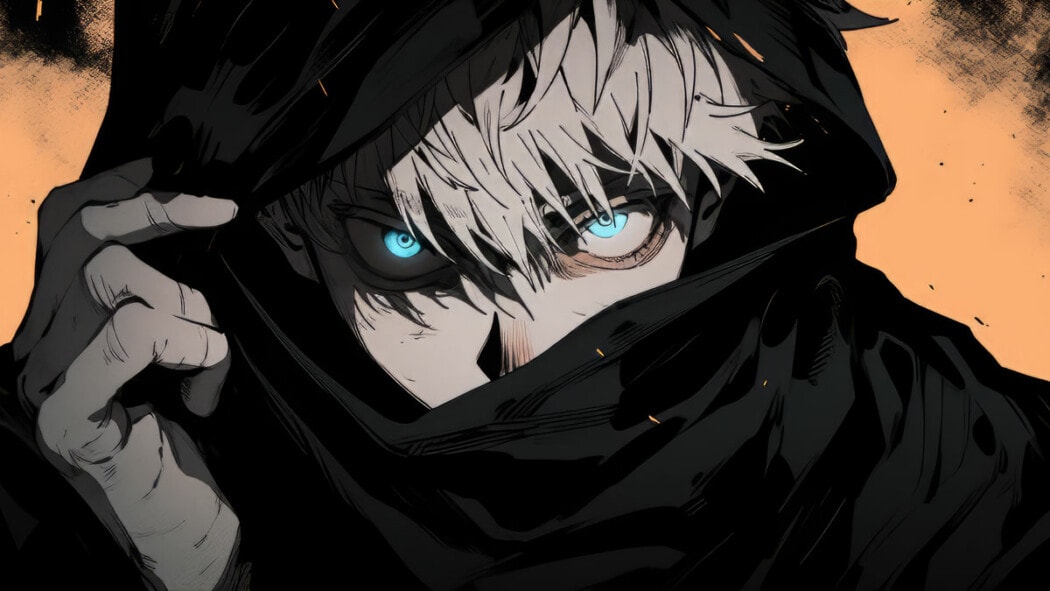In recent years, anime has experienced an unprecedented surge in popularity on a global scale, transcending cultural boundaries and captivating audiences outside of its Japanese origins. This phenomenon has reshaped the entertainment landscape and profoundly influenced the writing and production of Western movies and television shows.
This article explores the multifaceted impact of the growing popularity of anime on Western storytelling, examining how the unique elements of anime have inspired and transformed narratives in Western media.
The Rise of Anime – A Global Phenomenon

Credit: Crunchyroll
READ MORE: Invincible Season 3 Release Date, Cast, Plot, Theories & Predictions
Once considered a niche subculture, anime has evolved into a global phenomenon. The distinct art style, intricate storytelling, and diverse genres have contributed to its broad appeal. Streaming platforms have played a pivotal role in making anime accessible to a worldwide audience, allowing fans to explore a vast array of series and films.
As anime’s popularity continues to soar, its influence has become increasingly evident in Western entertainment.
Visual Aesthetics and Storytelling Techniques: A New Cinematic Language
Anime’s visual aesthetics, characterized by vibrant colours, expressive character designs, and dynamic action sequences, have left an indelible mark on Western filmmaking. Directors and writers are increasingly drawing inspiration from anime’s visually striking compositions to infuse a fresh, dynamic energy into their projects.
Moreover, the storytelling techniques unique to anime, such as nonlinear narratives, complex character arcs, and thematic depth, have become a source of inspiration for Western storytellers seeking to elevate their craft.
Diversity of Genres and Themes: Breaking Conventional Narratives

Credit: Crunchyroll
The diverse range of genres explored in anime, from fantasy and science fiction to romance and horror, has encouraged Western creators to break free from conventional storytelling moulds. The willingness of anime to delve into complex themes, often blurring the lines between good and evil, has prompted Western writers to explore morally ambiguous characters and intricate plotlines.
This shift reflects a broader acceptance of storytelling that challenges traditional norms and expectations.
Cultural Inclusivity: Embracing Global Perspectives
Anime’s ability to seamlessly weave cultural elements into its narratives has inspired Western creators to embrace a more inclusive approach. The incorporation of diverse cultures, mythologies, and perspectives in anime has encouraged Western writers to move beyond Eurocentric storytelling, resulting in a more representative and culturally rich tapestry in movies and TV shows.
Anime like Kakegurui and No Game No Life explore the casino culture with relevant knowledge about popular games in the West, which can be found on Minimumdepositcasinos.org, and some traditional Japanese games which educate the audience about Japanese culture.
Fan Engagement and Transmedia Storytelling: Building Fandom Communities
Anime’s fervent fanbase, known for its active engagement and passionate discourse, has reshaped the way audiences interact with media. Western creators are increasingly adopting transmedia storytelling approaches, creating immersive universes that extend beyond the confines of a single film or TV series.
The cultivation of dedicated fandom communities has become a strategic aspect of Western media production, emulating the participatory culture that anime enthusiasts have embraced for years.
Influence on Animation and Visual Effects: Pushing Creative Boundaries
The influence of anime extends beyond narrative techniques to the realm of animation and visual effects. Western animators and visual effects artists are integrating anime-inspired styles and methods to push the boundaries of creativity. This fusion of Eastern and Western animation aesthetics has resulted in visually stunning productions that resonate with audiences on a global scale.
The growing popularity of anime has ushered in a new era of creativity in Western storytelling, leaving an indelible mark on movies and TV shows. As Western creators continue to draw inspiration from the unique elements of anime, we can expect to see a continued evolution in narrative structures, visual aesthetics, and thematic exploration.
The cross-pollination of ideas between Eastern and Western storytelling traditions not only enriches the entertainment landscape but also fosters a globalized approach to creative expression. As anime’s influence permeates Western media, audiences can anticipate an exciting convergence of diverse storytelling traditions, shaping the future of cinematic and televised narratives in the years to come.
FAQ: The Impact of Anime on Western Media Narratives

Credit: Netflix
READ MORE: Obliterated Season 2 Release Date, Cast, Plot, Theories & Predictions
How has anime’s growing popularity influenced the visual aesthetics of Western movies and TV shows?
The increasing popularity of anime has inspired Western creators to incorporate vibrant colours, expressive character designs, and dynamic action sequences into their projects. The unique visual style of anime has inspired filmmakers and animators, adding a fresh and dynamic energy to Western media.
In what ways has anime affected storytelling techniques in Western entertainment?
Anime’s storytelling techniques have influenced Western writers and directors, including nonlinear narratives, complex character arcs, and thematic depth. The willingness to explore intricate plotlines and morally ambiguous characters has become more prevalent in Western movies and TV shows as creators draw inspiration from the diverse narratives found in anime.
How has anime encouraged diversity in Western storytelling?
Anime’s exploration of diverse genres and themes has encouraged Western creators to break conventional storytelling norms. The willingness of anime to tackle complex themes and embrace morally ambiguous characters has prompted Western writers to explore a broader range of narratives, resulting in more inclusive and culturally rich storytelling.
What impact has anime had on the cultural inclusivity of Western media?
Anime’s ability to seamlessly integrate cultural elements into its narratives has influenced Western creators to adopt a more inclusive approach. The incorporation of diverse cultures, mythologies, and perspectives in anime has prompted Western writers to move beyond Eurocentric storytelling, resulting in a more representative and culturally diverse tapestry in movies and TV shows.
How has the anime fan culture influenced the engagement strategies of Western media creators?
Anime’s passionate and engaged fanbase has influenced Western creators to adopt transmedia storytelling approaches. Creating immersive universes that extend beyond individual films or TV series allows creators to build dedicated fandom communities, reflecting the participatory culture that anime enthusiasts have embraced for years.
In what ways have anime-inspired animation and visual effects impacted Western productions?
The influence of anime extends beyond narrative techniques to animation and visual effects. Western animators and visual effects artists are integrating anime-inspired styles and methods to push creative boundaries. This fusion of Eastern and Western animation aesthetics has led to visually stunning productions that resonate with global audiences.
What do you make of this feature? We’d love to hear from you.















